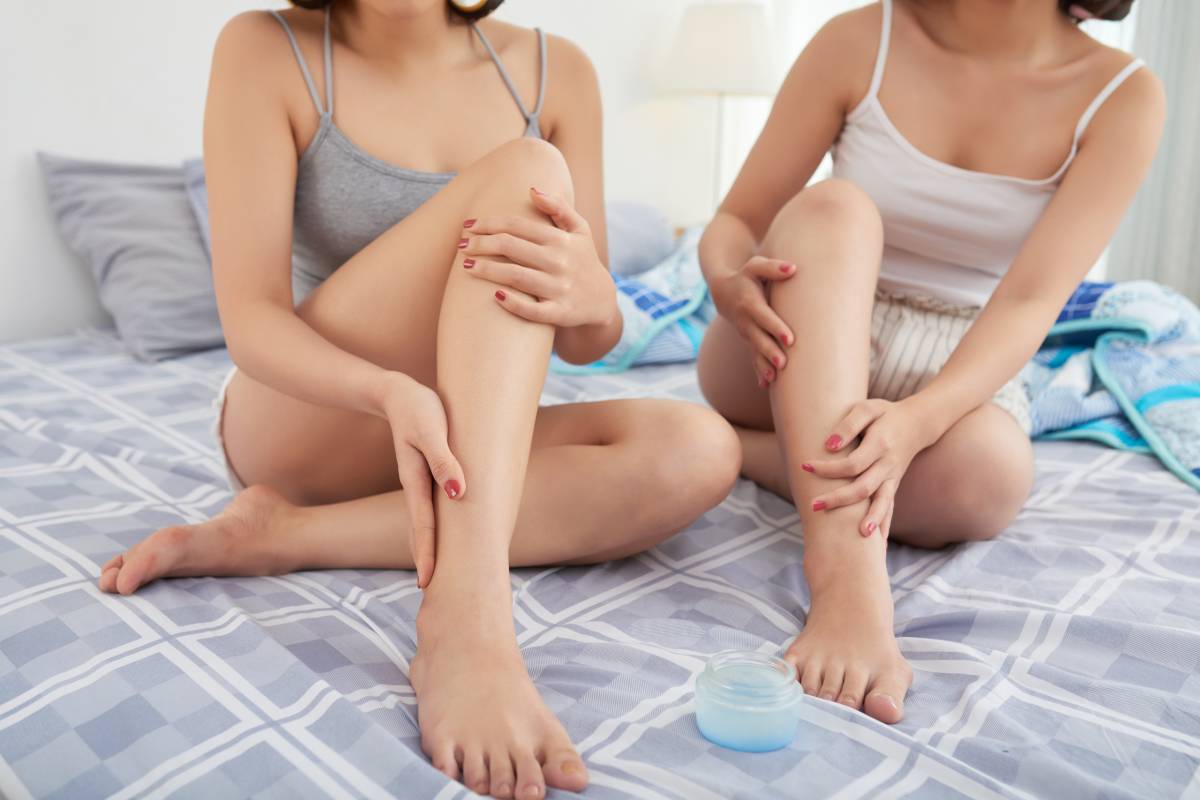How to Care for Your Skin During Menstruation?
Health Apr 29, 2025

Your skin reflects more than just your skincare routine it mirrors your internal rhythms, especially the hormonal changes throughout your menstrual cycle.
Many women notice their skin behaving differently at various points in the month: breaking out, becoming oilier, drier, or more sensitive. These changes aren’t random they’re a direct response to the natural fluctuations in estrogen, progesterone, and testosterone.
By learning how to care for your skin during menstruation and aligning your skincare with each phase of your cycle, you can reduce breakouts, boost radiance, and support your skin from the inside out. This article will guide you through exactly how to do that, along with common mistakes to avoid during your period.
Understanding Hormonal Fluctuations and Their Impact on Skin
- Menstrual Phase (Days 1–5): Estrogen and progesterone levels are at their lowest, leading to drier, more sensitive skin.
- Follicular Phase (Days 6–14): Estrogen levels rise, enhancing skin hydration and elasticity.
- Ovulation Phase (Days 15–17): Estrogen peaks, resulting in plump, radiant skin.
- Luteal Phase (Days 18–28): Progesterone and testosterone levels increase, which can lead to oilier skin and potential breakouts.
Skincare During Menstruation: Days 1–5
During menstruation, hormonal levels drop, causing skin to become drier and more sensitive. To support your skin during this phase:
- Gentle Cleansing: Use a mild, hydrating cleanser to remove impurities without stripping the skin’s natural moisture.
- Moisturization: Apply a rich moisturizer containing ingredients like hyaluronic acid or ceramides to replenish hydration.
- Spot Treatment: If breakouts occur, use a targeted treatment with benzoyl peroxide or salicylic acid.
- Avoid Harsh Exfoliation: Refrain from using abrasive scrubs or products with high alcohol content, as they can irritate sensitive skin.
Synchronizing Skincare with Your Menstrual Cycle
Aligning your skincare routine with your menstrual cycle can enhance skin health:
Follicular Phase (Days 6–14):
As estrogen rises, skin becomes more resilient. This is an ideal time to introduce active ingredients like vitamin C or retinoids. Incorporate gentle exfoliation to remove dead skin cells and promote cell turnover.
Ovulation Phase (Days 15–17):
With peak estrogen levels, skin appears radiant. Maintain hydration with lightweight moisturizers and continue using antioxidants. Be cautious with heavy makeup to allow skin to breathe.
Luteal Phase (Days 18–28):
Increased progesterone can lead to oilier skin and potential breakouts. Use oil-free, non-comedogenic products. Incorporate salicylic acid or niacinamide to control oil production and reduce inflammation.
Practices to Avoid During Menstruation
Certain habits can exacerbate skin issues during menstruation:
- Skipping Sunscreen: Even if you’re indoors, UV rays can affect your skin. Always apply a broad-spectrum sunscreen with at least SPF 30.
- Using Harsh Products: Avoid products with high alcohol content, strong fragrances, or aggressive exfoliants, as they can irritate sensitive skin.
- Over-Moisturizing: While hydration is essential, over-moisturizing can clog pores, especially if using heavy creams not suited for your skin type.
- Neglecting Diet and Hydration: A balanced diet rich in antioxidants and adequate water intake support skin health. Limit processed foods and increase consumption of fruits, vegetables, and omega-3 fatty acids.
Additional Tips for Skin Health During Menstruation
- Maintain a Consistent Routine: Stick to a skincare routine that suits your skin type and needs. Consistency is key to managing hormonal skin changes.
- Monitor Skin Reactions: Keep track of any changes in your skin’s condition and adjust your routine accordingly.
- Consult a Dermatologist: If you experience severe breakouts or persistent skin issues, seek professional advice for personalized treatment options.
Exercises for Skin and Body Health During Menstruation
Doing squats helps stimulate blood circulation, boosts skin nourishment, reduces stress, and balances hormones, which can help alleviate skin issues caused by hormonal changes during the menstrual cycle, while also strengthening the body and promoting a glowing complexion from within.
Additionally, squats engage the core and lower body muscles, improving overall posture and contributing to better physical health, which can positively reflect on your skin’s appearance and overall well-being.
Conclusion
Understanding the relationship between your menstrual cycle and your skin is key to maintaining a healthy complexion. By recognizing the hormonal fluctuations throughout the cycle, you can adjust your skincare routine to meet your skin’s changing needs.
From gentle cleansing during menstruation to incorporating active ingredients in the follicular and ovulation phases, syncing your skincare with your cycle can reduce breakouts, boost hydration, and improve your skin’s overall radiance.
Avoiding harmful habits like skipping sunscreen or over-moisturizing, along with maintaining a balanced diet and hydration, will also support your skin’s health.
Remember, consistency is crucial, and if issues persist, don’t hesitate to seek professional advice. By caring for your skin in tune with your body’s rhythms, you’ll enhance your natural glow throughout the month.